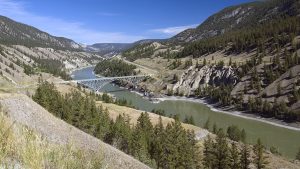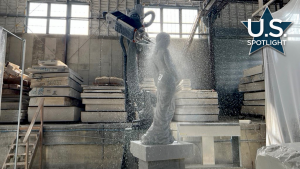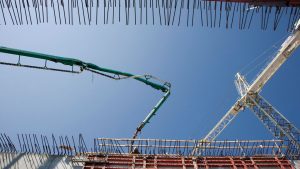The cameras aren’t yet rolling on Toronto’s eastern waterfront, but delegates from CanBUILD 2008 who toured the Port Lands district recently had a sneak preview of a development intended to attract blockbuster attention.
The cameras aren’t yet rolling on Toronto’s eastern waterfront, but delegates from CanBUILD 2008 who toured the Port Lands district recently had a sneak preview of a development intended to attract blockbuster attention.
The 30-acre Filmport site, located on the north side of the Shipping Channel at Don Roadway, and areas immediately surrounding it have been vacant since the mid-1980s, when Imperial Oil closed a tank farm and production facilities.
The property was sold to the Toronto Economic Development Corporation in the early 1990s and, in conjunction with much of the waterfront, has recently experienced a rebirth.
Following a risk assessment in 2006, TEDCO opted for on-site bioremediation rather than older-style dig-and-dump.
This was completed late last year, and crews are now building the first phase of the Filmport project, including 233,000 square feet of studio, shop, production and support space and one of the world’s largest sound stages, which — proponents hope — will attract high-budget blockbuster films.
“It will be the largest cluster in Toronto’s history,” said Hon Lu, manager of urban environmental services with TEDCO, explaining that the city expects up to 4,000 people to be involved in production and related work once Filmport is up and running — the target date is 2010.
As is often the case with brownfields, getting there wasn’t easy. One initial problem, Lu said, was financing. “Canadian banks were too risk adverse, but we finally got financing from banks in the U.S.”
Particularly helpful at creating peace of mind, Lu said, was the filing of a record of site condition. “It’s a phenomenal tool to lock in place the obligations of today…it’s a letter of closure,” he explained, adding that officials were able to use these documents to help manage issues such as tiny pockets missed during the bioremediation process.
“That’s where a lot of the money was spent front-end-wise,” Lu said.
“You just don’t want to be wrong with a deal this big, so we went back to our records just to make sure we didn’t miss anything.”
While the project’s first phase was relatively straightforward, dealing largely with fuel tanks and dredging from the nearby mouth of the Don River, the second phase, with a planned office tower and post-production facility, are expected to be more complex.
“At least we have right now, on title, that this whole block is cleaned up to Table 3 (standard industrial-commercial) standards of the day — period. End of story. So if someone wants to come back here and renegotiate a residential development they have to go through the hoops of ministerial approval since it’s filed on title. We didn’t technically have to do this because it was a land exchange, but it was a question of good practice.”
Filmport is just part of the overall east-waterfront equation. TEDCO is overseeing remediation of a wide swath of land, in various phases. One project attracting significant attention is the new headquarters for Corus Entertainment, to the west of Filmport, in the East Bayfront.
One challenge was underground methane from an old landfill. “There are a couple of cases of residential and commercial buildings being built on methane, but this was the first time in Toronto in a long time, so people were quite nervous about it,” Lu said.
“We chose a risk assessment, and this picked up many things. Corus has a document now that gives them a map of what the issues are.”










Recent Comments
comments for this post are closed